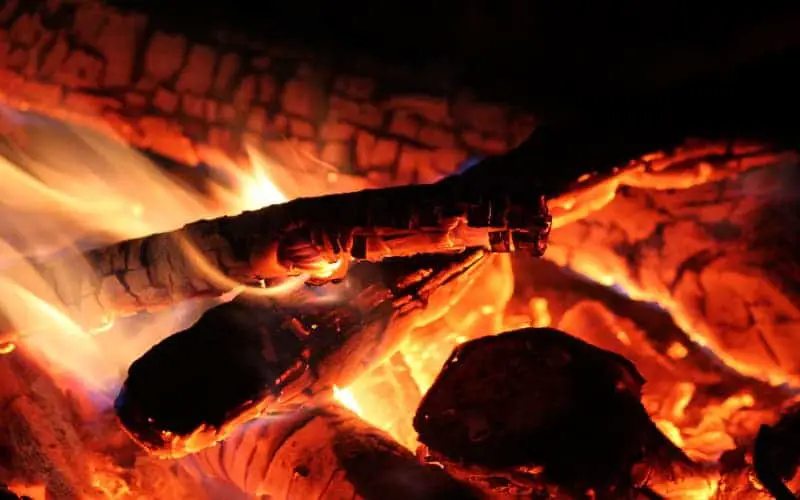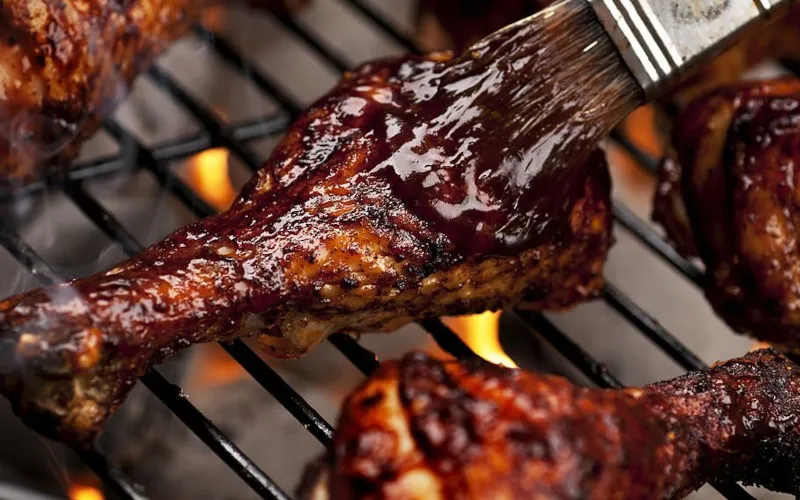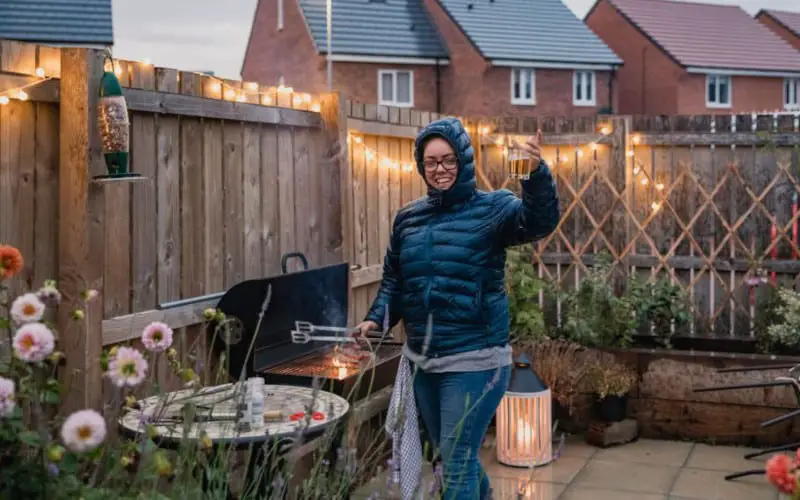Gas grills have revolutionized BBQ and cooking as they provide an easy and fast way to cook food. Do you imagine the work you will need to operate charcoal grills? First, the charcoal leads to an open flame which may be dangerous for first-time chefs and does not offer the required temperature control during cooking.
On the other hand, the grills require power and may not be suitable for camping. This makes you resort to gas grills which are a go-to for any occasion. Unfortunately, the gas grill may have an incorrect low setting; whereby the grill gets too hot on a low setting.
Read on to get the hang of how to regulate the faulty low-heat settings on your gas grill.
The Lowest Possible Temperature on Gas Grill
When cooking with a gas grill, you may need to understand the temperature ranges for low, medium, and high heat to achieve the desired results. The lowest temperature settings for cooking food on the gas grill is about 225°F to 250°F. The lower temperature settings suit smoking meat and offer the most authentic barbecue. It subjects the meat to a long cooking process at low temperatures, thus keeping the meat flavors.
You may need the low-temperature setting for pork shoulder, brisket, shoulder clod, pigs, and a whole lamb. However, you would increase the temperature to create a crispy finish.
Related: How to Smoke a Brisket on a Charcoal Grill
Causes of Grills Getting Too Hot
You may need to understand the propane grill parts to understand how it functions. The grill has important parts which regulate the gas flow and adjust the air mixture to achieve the desired results. The propane grill has a hose connection, pressure regulator, burner tubes, and venturi tubes.
These components control the air and gas mixture and impact the appliance temperature. You will replace the broken propane grill yourself when you understand how the parts function.
Your propane grill should cook the food at low, medium, and high temperatures, but sometimes you may experience increased temperatures. The grill becomes too hot even at low temperatures.
Sometimes, the cooking space may have an uneven cold and hot spots leading to uneven cooking. The grill may become too hot at low temperatures when not using a regulator or if the regulator is faulty. The uneven temperatures may occur due to the wrong orifice, venturi tubes with spider webs, and a gas propane valve that does not exist.
These flaws cause even heat distribution and hot and cold spots on the cooking surface. Unfortunately, you will not cook the food effectively with irregular temperatures, affecting the cooking outcomes.
You may experience gas grill pressure-regulator problems with the wrong pressure regulator. You may install the high-pressure regulator instead of the low-pressure regulator leading to heating problems.
Moreover, if the diaphragm is ruptured, it will cause uneven gas supply, impacting the cooking surface temperatures. If the spring has loosed stiffness due to temperature changes and gas pressure fluctuation, you will experience even temperature in the cooking appliance.
When cooking with the propane gas grill, you would need a pressure regulator to control the gas which flows to the burning chamber, thus controlling the heat produced by the grill. A grill gas with a regulator attached to the propane tank might have fewer issues, but you would install the regulator on the natural gas grill as most models don’t have the regulators.
- Faulty pressure regulator
A faulty pressure regulator may cause issues for your grill, and it may be wise to check the regulator periodically to ensure it is in good condition. The dust, dirt, and grease might damage the pressure regulator, and it would be wise to clean it often to keep it in an excellent working condition.
The pressure regulator may have uncontrolled gas flow without frequent cleaning, leading to high temperatures.
The cold and heat changes in the grill may impact the spring resistance in the regulator as a result of the performance of the pressure regulator. Thus, you should increase the temperature steadily or lower it slowly to avoid rapid temperature changes which impact your spring regulators.
- Unsuitable regulators
The grill may get hot due to the hose connection issues which arise from unsuitable regulators in the gas line or incorrect hose connection. The faulty hose connection will impact the grill’s gas flow, leading to uncontrolled high temperatures that impact food cooking.
Thus, if you use the natural gas orifice, which has a bigger diameter on the propane gas grill, which needs a smaller orifice, your grill would develop hose connection issues. A higher diameter orifice will cause more propane to flow to the grill leading to increased combustion and higher temperatures.
Additionally, if spiders form webs on the inside of the hose, the alliance would have interrupted gas flow which may cause irregular flames.
- Orifice nozzle
The orifice nozzle regulates the velocity of the gas as it mixes with the air on the venture tube for combustion. Thus a larger orifice may lead to high velocity, which leads to increased combustion as the propane mixes with oxygen in the combustion chamber.
- Hose insulation issues
When the hose insulation is damaged, it makes it difficult to grill on a hot day, leading to adequate expansion of the hose. The expansion of the hose leads to increased propane supply to the combustion chamber, increasing pressure and the combustion of the gas resulting in high temperatures.
Thus, the hose should be properly insulated to avoid issues such as pipe expansion and high heating chamber temperatures.
- Carbon deposits
Sometimes the increased temperatures may occur due to the carbon deposits on your grill; this may happen in the combustion chamber. You would need to check if the combustion chamber is clean at all times.
The carbon may damage the orifice, leading to temperature rise in the grill, impacting even temperature supply to the cooking surface.
- Sun exposure
It would be wise to avoid placing the grill under direct sunlight when cooking in the outdoor kitchen, as the sunlight may cause gas inside the cylinder. The increased pressure in the propane in the cylinder leads to too hot grills in low settings.
More propane will flow from the holding tank into the combustion tube, leading to higher temperatures. You should build an outside shade to ensure the grill is not exposed to direct heating.
- Clogged burners
Another issue may be the clogged burners which are halogens due to food particles that clog the burners restricting the gas flow. Clogged burners lead to irregular flames on the burner leading to cold and hot spots on the grill. There might be hinge flames on certain burners and little or no flames on other burners.
- Manufacturing issues
If the pattern slots are uneven on all the burner tubes, it may cause problems for the grill. Therefore, if the uneven slots result from manufacturing issues, you need to return the grill to the manufacturer. Moreover, if the grill is still under warranty, the manufacturer will not charge for replacing the grills with manufacturing flaws.
- The shutter and venture tubes
The shutter and venturi tube issues may impact your gas grill, especially if it does not allow the efficient air/gas ratio needed for gas grill combustion. Thus, if you mess up the air shutter of the gas grill, the cooking space will be too hot at a low setting.
Tips to Prevent Food from Too High Temperature of Gas Grill
- Cook the food with indirect heat
Although you can learn how to replace the broken parts, you may implement some tips to eliminate high-temperature issues in the gas grill. You may use indirect heating to avoid exposing the food to high temperatures.
You may invest in a burner grill with three or more burners as indirect heating is possible when the grill has more burners. You need to turn the grill on for about 15 minutes before cooking. Then turn off the third burner and place the food on the grill to avoid exposing it to high temperature.
- Use a heat diffuser
A heat diffuser plate on the grill grate will reduce the heat on the grill. The diffuser distributes the heat on the cooking surface. You would use the diffuser before you place your food on the grill.
A diffuser would be perfect for cooking food at low temperatures, and you may avoid using it when cooking food at high temperatures to reduce the grill temperatures.
- Avoid turning the sear station
Avoid turning on the sear station, some grills have a briner that operates on full settings, and it may impact the grilling temperature; thus, it would be wise to turn off the sear station.
Check to know the knob with the sear settings before using the grill.
The sear station is meant to increase temperature leading to a crispy finish on the meat. You would only turn on the sear station when creating the crispy finish, as it creates an intense heat zone.
You only need to turn the sear burner when you need to increase the temperatures and avoid cooking the food on low heat.
- Use an extra thermometer
You may use an extra thermometer on your grill to monitor the temperature in the grill. The built-in thermometer placed on the grill lid may not record the temperatures efficiently, and you would need an extra thermometer.
A Bluetooth temperature probe may efficiently determine the grill temperature, leading to proper control during grilling. The extra thermometer will read the ideal temperatures in the cooking space, and you can adjust the temperatures accordingly to reduce food overheating.
- Clean the grill
Clean the grill as the carbon deposits on the combustion chamber and other parts may cause temperature increase even in the low settings. The grease may impact how the grill functions, the grease will start burning, releasing smoke and extra heat.
The grease may block some burners leading to uneven heating on the cooking surface. You can insert the screwdriver in the burner slots to punch down the grease.
Related: How to Clean Rusty Grill Grates
- Use the right orifice for the gas grill
You need to check if the grill uses the right propane orifice that distributes the air and gas evenly into the combustion chamber. You may use a 3/64″ drill bit shank to check if the orifice is right for the gas grill and replace the orifice as needed to meet your needs.
Finally, the manufacturing problems and return the appliances to the manufacturer if it is still under warranty.
Frequently Asked Questions
Why Does the Gas Grill Get Hot on Low Heat?
When you set the gas grill on low heat, you expect to cook the food at a low temperature. Unfortunately, your grill might have high temperatures even at low settings leading to uneven cooking. Due to manufacturing issues, carbon deposits, and a large propane orifice, the grill may malfunction.
You should ensure the propane grill functions properly to prevent even cooking.
Can You Use the Propane Orifice on the Natural Gas Grill?
The propane and natural gas orifice come in different sizes, and you cannot use them interchangeably on your appliance. It is better to use the propane orifice on propane gas and the natural gas orifice on the natural gas grill.
The natural gas orifice might be larger than the propane orifice, thus releasing too much gas into the combustion chamber, leading to overheating. Too much gas supply to the combustion chamber increases the pressure and the combustion rate.
How Can You Prevent the Gas From Getting Too Hot?
You may need to check if the high-temperature results from the manufacturing flaws, as the grill company will replace the faulty appliance. Moreover, you would clean the grease from the burners and remove the combustion chamber. A clean chamber is least likely to have uneven heat distribution.
Conclusion
You can cook meat at low temperatures for an extended time on the grill leading to a juicy and crispy meal. Unfortunately, the grill may experience increased temperature at low-temperature settings due to hose insulation issues, ineffective regulators, carbon deposits, and grease build-up.
If it gets hot at low-temperature settings, you may need to check the grill for manufacturing issues and return it to the manufacturer within the warranty period. Moreover, you would clean it efficiently to remove the carbon and grease deposits, leading to smoke production and increased temperatures.
You can ensure the gas orifice does not provide too much gas to the combustion chamber and ensure that all other components are functional—good luck with gas grill temperature control.






